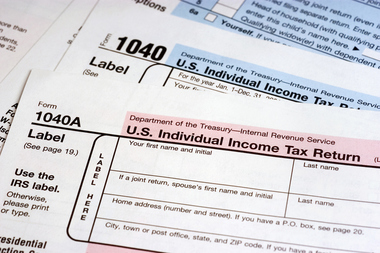All About Schedule D: Capital Gains
Schedule D is the IRS tax form that reports your realized gains and losses from capital assets — investments and other business interests. You detail the total purchase price of assets, what they were sold for and whether they were held for long term (more than a year) or short term (less than a year).
When to use Schedule D
Use Schedule D if you sold taxable assets such as stocks, exchange-traded funds, mutual funds, bonds, options, real estate (other than your primary residence), futures and/or cryptocurrency. You also file Schedule D if you have realized capital gains or losses from a partnership, estate, trust or S corporation. If you have gains or losses not reported on another form, report them on Schedule D. Schedule D can also be used by filers with nonbusiness bad debts. If you have like-kind exchanges or installment sales, you may have to answer questions about your transactions on Schedule D.
The information for Schedule D is determined by using Form 8949, which becomes part of your tax return. On Form 8949, note when you bought the assets and when you sold them, as well as their costs and what you sold them for. Your purchase and sales dates are critical because how long you hold the property determines its tax rate.
Capital losses can reduce your taxes up to a net $3,000 loss limit. If your losses are greater than this annual limit, you can carry the overage forward to use against gains in future tax years. Capital loss carryovers from earlier tax years go on line 14.
If you owned the asset for a year or less, the sale would be taxed at the same rate as your regular income, which could be as high as 37% on your 2024 tax return. Short-term sales are reported in Part 1 of the form.
If you held the asset for more than a year, it’s considered a long-term holding and is eligible for a lower capital gains tax rate. Depending on your income level, this could be 0%, 15% or 20%. Sales of long-term assets are reported on the form’s Part 2.
Know the next steps
Total your entries on Form 8949 and transfer them over to Schedule D. There, you’ll subtract your cost basis from the sales price to arrive at your total capital gain or loss.
Installment sales and sales of business property, all of which are reported to you on any Schedule K-1s you receive, also go on Schedule D, as does any information from any Form 1099-Bs, which are documents sent by financial institutions.
You don’t always have to file Schedule D, so watch for these situations:
- If distributions (reported on a 1099-DIV) are your only investment item to report, report them instead on your 1040 or 1040A return.
- If your capital gain is from the sale of your primary residence, you meet some basic residency requirements and your home sale profit is $250,000 or less ($500,000 if married filing jointly), it’s not subject to federal capital gains tax.
Of course, this is just a general overview of what could be a complex tax situation. Be sure to work closely with a qualified tax professional.
©2024


